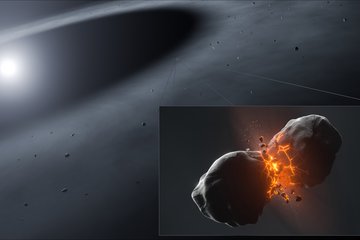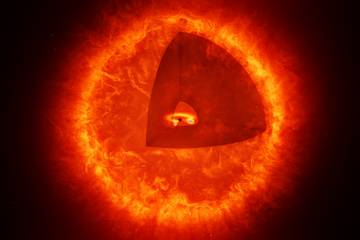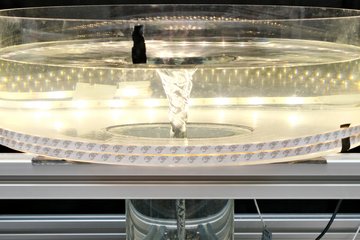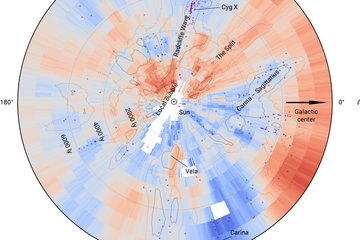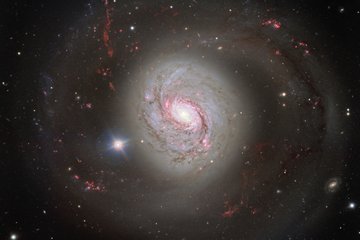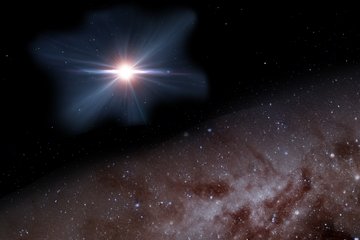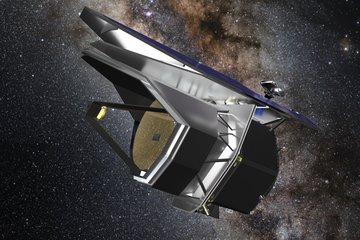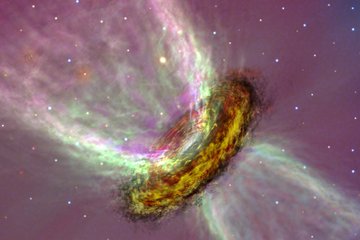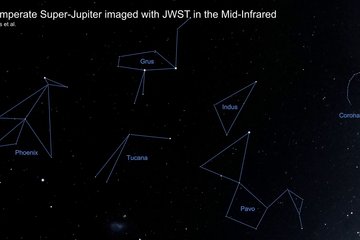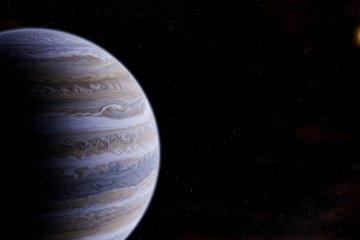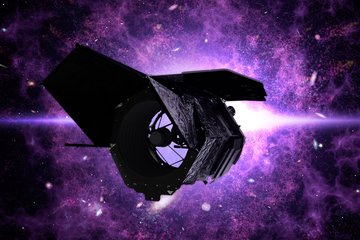A nearby potentially habitable Earth-mass exoplanet
Astronomers find a rare rocky Earth-mass planet suited to probe for life signs
A team of astronomers led by MPIA scientist Diana Kossakowski have discovered an Earth-mass exoplanet orbiting in the habitable zone of the red dwarf star Wolf 1069. Although the rotation of this planet, named Wolf 1069 b, is probably tidally locked to its path around the parent star, the team is optimistic it may provide durable habitable conditions across a wide area of its dayside. The absence of any apparent stellar activity or intense UV radiation increases the chances that Wolf 1069 b could have retained much of its atmosphere. Therefore, the planet is one of only a handful of promising targets to search for habitability markers and biosignatures. The results appear in the journal Astronomy & Astrophysics.
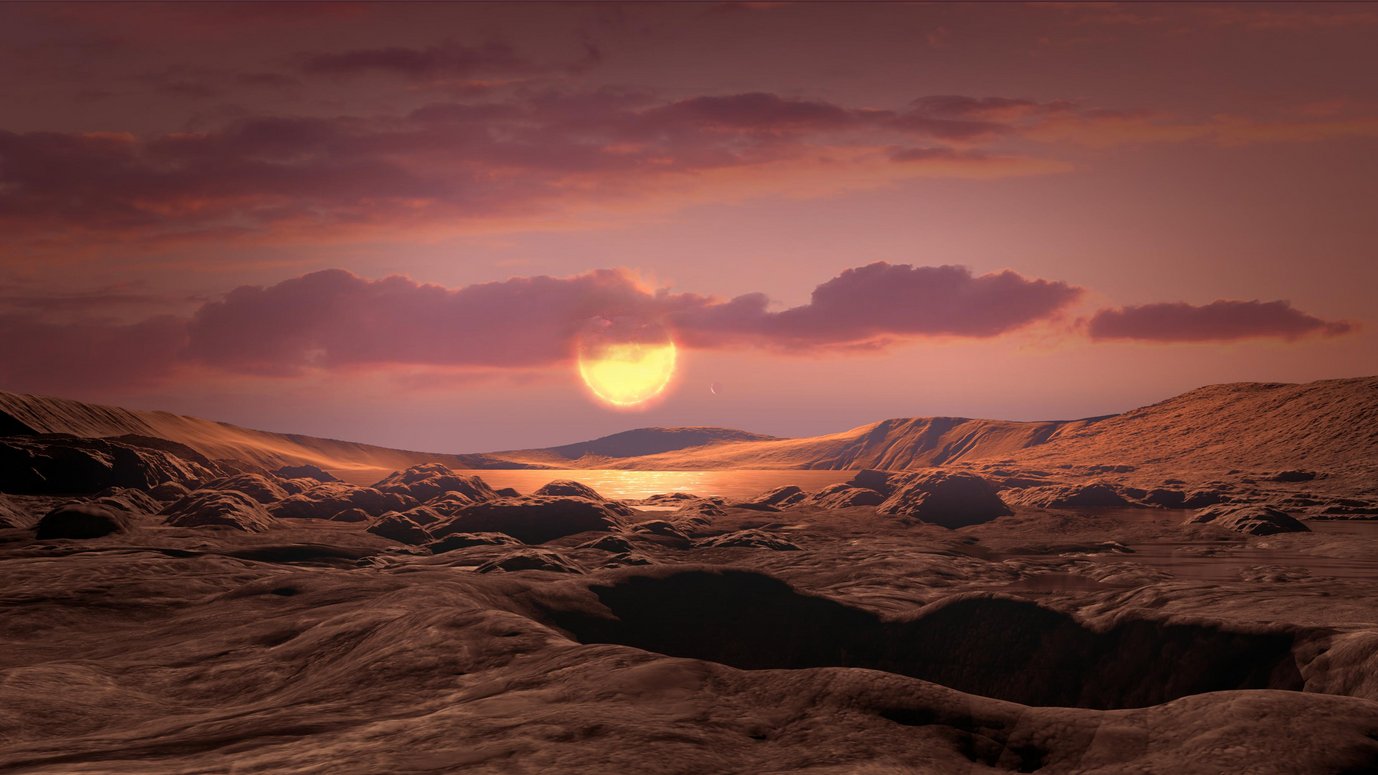
One of the most exciting goals of exoplanet research is to find a habitable world similar to Earth. However, of the more than 5000 exoplanets astronomers have discovered so far, only about 1.5% have masses below two Earth masses. Just about a dozen of them populate the so-called circumstellar habitable zone, the range in a planetary system where water can maintain a liquid form on the planet’s surface. Observations capable of finding such low-mass planets are still very challenging.
Looking for exoplanets around red dwarf stars
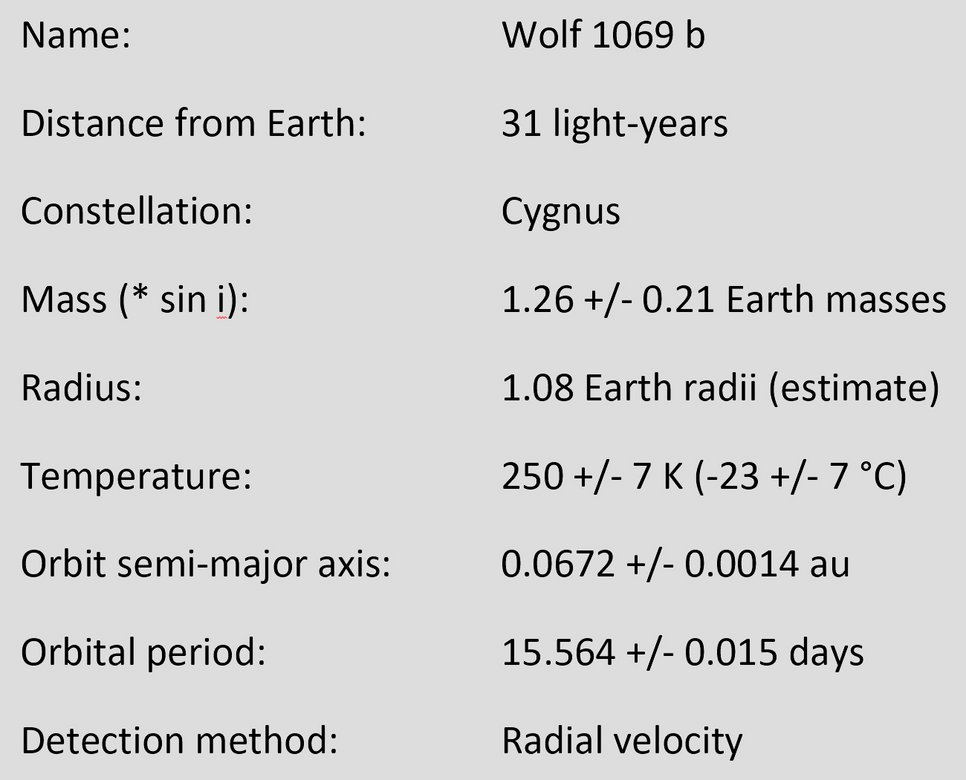
One way of improving the chances is to probe low-mass stars for signatures of orbiting planets. This is precisely what Diana Kossakowski and her colleagues did in the framework of the CARMENES program. This project, with major contributions by the Max Planck Institute for Astronomy (MPIA) in Heidelberg, Germany, uses the Calar Alto Observatory in Spain.
“When we analysed the data of the star Wolf 1069, we discovered a clear, low-amplitude signal of what appears to be a planet of roughly Earth mass. It orbits the star within 15.6 days at a distance equivalent to one-fifteenth of the separation between the Earth and the Sun,” says MPIA’s Diana Kossakowski. She is the main author of the underlying paper.
Despite the close range, Wolf 1069 b only receives about 65% of the incident radiant power of what the Earth obtains from the Sun. Compared to solar properties, Wolf 1069 emits much less radiation, and its surface is cooler, making the star appear orange. These properties result in reduced heating power. “As a result, the so-called habitable zone is shifted inwards”, mentions Kossakowski. Therefore, planets around red dwarf stars such as Wolf 1069 can be habitable even though they are much closer than the Earth is to the Sun. Co-author Jonas Kemmer from the Centre for Astronomy at Heidelberg University (ZAH) adds, “The CARMENES instrument was built for the very purpose of making it easier to discover as many potentially habitable worlds as possible.”
What does habitable mean?
Of course, it needs more than liquid water to make up a habitable planet. Like on Earth, an atmosphere that causes a natural greenhouse effect may help raise the average temperature above the 250 Kelvin (- 23 °C) calculated for Wolf 1069 b. This value assumes a simple bare rocky planet. In fact, the astronomers computed that if it had an Earth-like atmosphere, the mean temperature might rise as high as 286 Kelvin (+ 13 °C), keeping water liquid over a large region on the planet’s side facing the star. Based on computer simulations using complex climate models, the team concludes the planet could maintain moderate temperatures and surface liquid water for a wide range of atmospheric conditions and surface types.
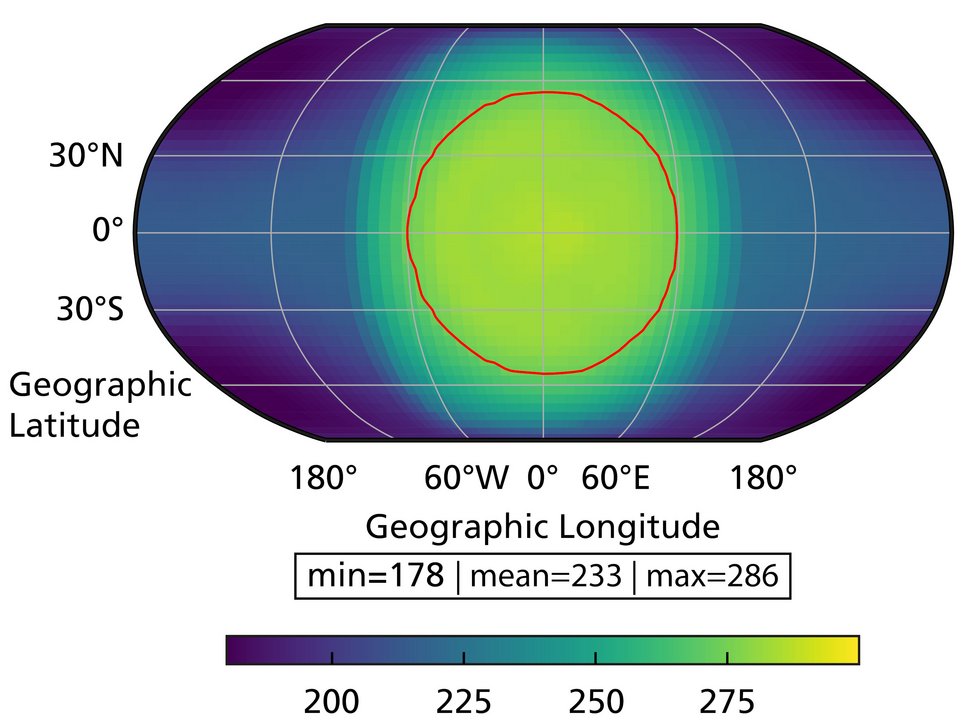
In addition, such an atmosphere would protect against high-energy electromagnetic radiation and particles that either stem from interstellar space or the central star. Red dwarf stars, in particular, are notorious for their activity leading to massive stellar winds and intense UV radiation. Similar to what the Sun did to Mars, they may strip off a planet’s atmosphere, which renders their surfaces sterile.
Unlike, e.g. Proxima Centauri with its two confirmed planets, Wolf 1069 appears benign. The observations do not indicate any kind of harmful stellar activity. Still, it is probably too early to be overly optimistic. During its youth, a red dwarf star tends to go through a high activity phase with dire consequences for any planet in its vicinity. However, if Wolf 1069 b had developed and maintained an atmosphere early on, it should have retained it until today. It is even possible that the planet may have a magnetic field similar, yet weaker, to Earth that protects it from charged stellar wind particles.
A lonely planet
Although this idea is a bit speculative, the line of reasoning is sound. “Our computer simulations show that about 5% of all evolving planetary systems around low-mass stars, such as Wolf 1069, end up with a single detectable planet,” explains MPIA scientist Remo Burn, a team member of the study. “The simulations also reveal a stage of violent encounters with planetary embryos during the construction of the planetary system, leading to occasional catastrophic impacts,” he adds. These events would melt any young, evolving world. The planetary core should still be hot and liquid today, providing a dynamo that produces a global magnetic field – similar to Earth.
Wolf 1069 b appears to be one of those rare lonely planets. Based on their measurements, the astronomers exclude additional planets with at least one Earth mass and orbital periods of less than ten days. That is lower than the 15.6 days they determined for Wolf 1069 b. However, they cannot rule out planets on wider orbits.
Eternal day and night
While Wolf 1069 b is a promising candidate to constrain further its conditions concerning habitability, there is one peculiar property it shares with virtually all planets in the habitable zones of red dwarf stars. Its rotation is likely tidally locked to its orbit around the host star. In other words, one rotation about its axis takes as long as one complete revolution. As the same side always faces the star, it experiences eternal day while there is always night on the opposite hemisphere.
The same phenomenon lets us always see the same side of the Moon. Tidal forces slightly deform the planet away from its symmetrical shape towards an ellipsoid. This causes the star’s gravity to act differently across the planet’s surface, resulting in a braking effect. Over time, the rotation period thus gradually approaches the orbital period. The effectivity of tidal locking depends on the distance from the star and its mass. For red dwarf stars, that range broadly coincides with the location of the habitable zone. As a result, potentially habitable conditions only occur in a confined area on the planet’s dayside.
Finding Earth-mass planets is hard work
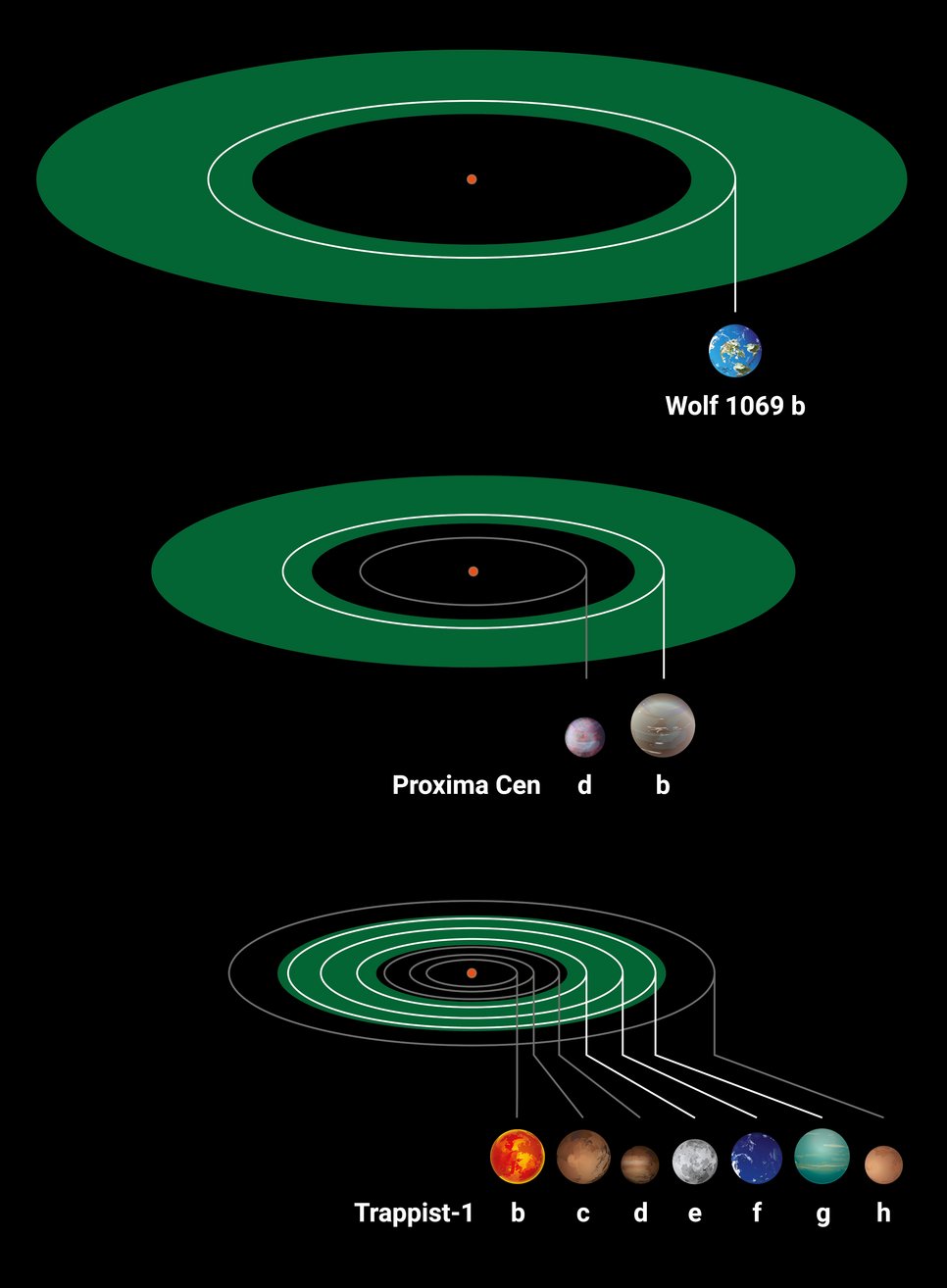
The technological progress since the first detection of an exoplanet almost 30 years ago is breathtaking. Still, the signatures astronomers look for to detect planets with masses and diameters similar to Earth are tiny and still hard to extract from the measurements. The CARMENES program uses the radial velocity (RV) method to look for exoplanets around low-mass stars. This technique measures minor periodic variations in the stellar spectra, which hints at a companion gravitationally pulling at the host star. Thus, the star follows a trajectory mirroring the planet’s orbit, albeit at a much smaller distance from their common centre of mass. This effect becomes more pronounced for lower mass ratios between the star and the planet, as is the case when observing low-mass red dwarf stars.
During one revolution, the star approaches us on one side and recedes on the other. Astronomers infer the resulting tiny change in velocity by measuring the periodic displacement of the stellar spectral lines. From this, they calculate the planet’s mass – or at least a lower limit because the unknown tilt of the orbital plane modifies the measured velocity, which generally is somewhat smaller than the planet’s actual orbital velocity.
As was the case for Wolf 1069 b, those signals are so small that they require complex and sophisticated analytic procedures to distinguish them from artefacts in the spectra. They stem from many influences. For instance, before the stellar light enters the telescope, it passes through the Earth’s atmosphere, which superimposes its own strong terrestrial spectrum on the one produced by the star. Disentangling those contributions is challenging and can influence the results if not done correctly.
Only a handful of candidates for future exoplanet characterisation
With a distance of 31 light-years, Wolf 1069 b is the sixth closest Earth-mass planet in the habitable zone of its host star. Because of its favourable prospects regarding habitability, it is among a small illustrious group of targets, such as Proxima Centauri b and TRAPPIST-1 e, to search for biosignatures. Alas, such observations are currently beyond the capabilities of astronomical research.
“We’ll probably have to wait another ten years for this,” Kossakowski points out. “Though it’s crucial we develop our facilities considering most of the closest potentially habitable worlds are detected via the RV method only.” The Extremely Large Telescope (ELT), which is under construction in Chile, may be able to characterise the conditions of those planets. Until then, Kossakowski and her team look forward to finding more exciting candidates like Wolf 1069 b.
Background information
The MPIA researchers involved in this study are Diana Kossakowski, Martin Kürster, Trifon Trifonov (also Department of Astronomy, Sofia University “St. Kl. Ohridski”, Bulgaria), Thomas Henning, Remo Burn, Aleksei Pavlov and Martin Schlecker (also Steward Observatory, University of Arizona, Tucson, USA).
CARMENES (Calar Alto high-Resolution search for M dwarfs with Exoearths with Near-infrared and optical Échelle Spectrographs) is a research programme to search for Earth-like exoplanets near red dwarf stars. The consortium consists of 11 German and Spanish research institutions: Max Planck Institute for Astronomy (MPIA), Instituto de Astrofísica de Andalucía (IAA), Landessternwarte Königstuhl (LSW-ZAH), Institut de Ciències de l'Espai (ICE), Institut für Astrophysik Göttingen (IAG), Universidad Complutense de Madrid (UCM), Thüringer Landessternwarte Tautenburg (TLS), Instituto de Astrofísica de Canarias (IAC), Hamburger Sternwarte, Centro de Astrobiología (CAB), Centro Astronómico Hispano-Alemán (CAHA).
MN




